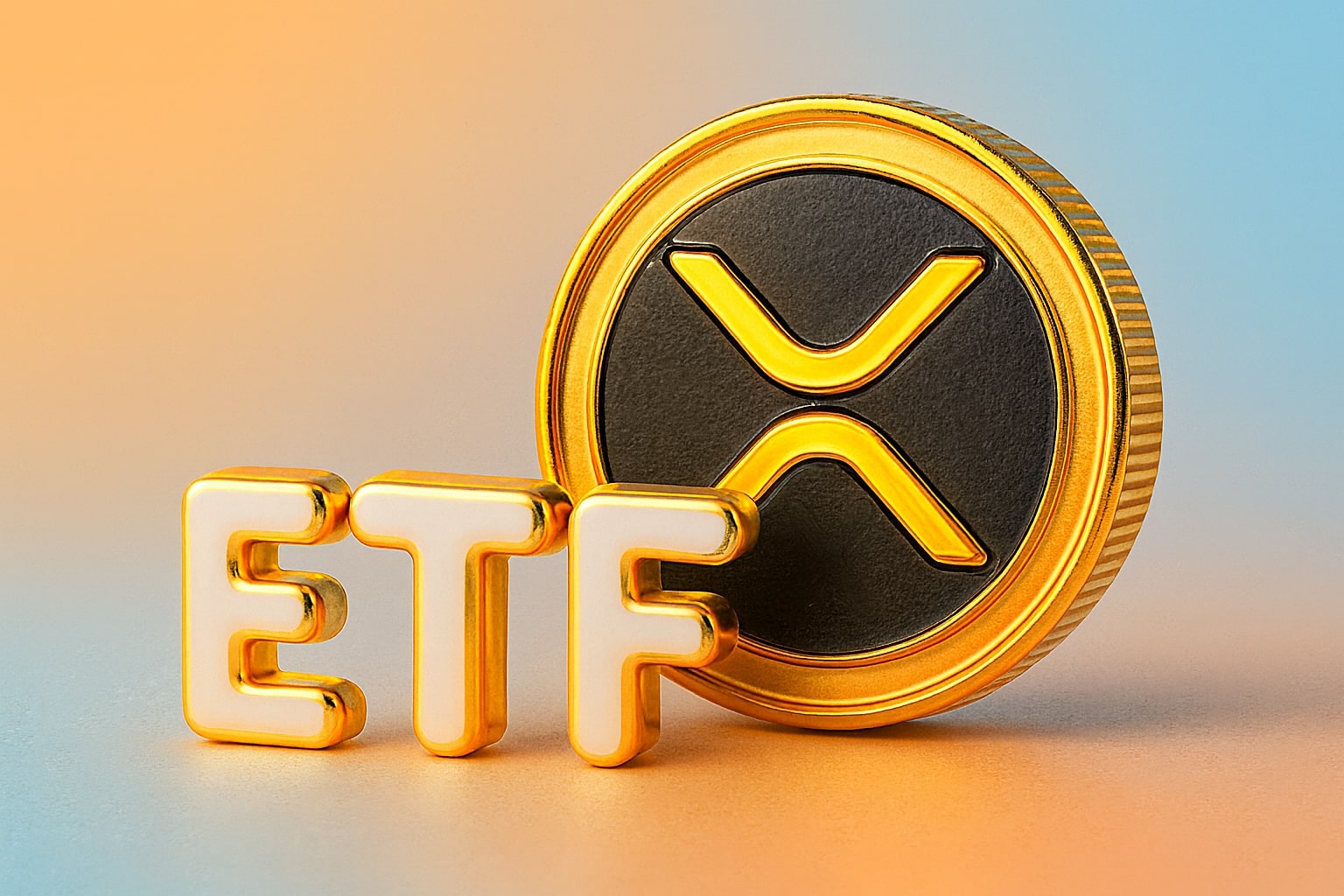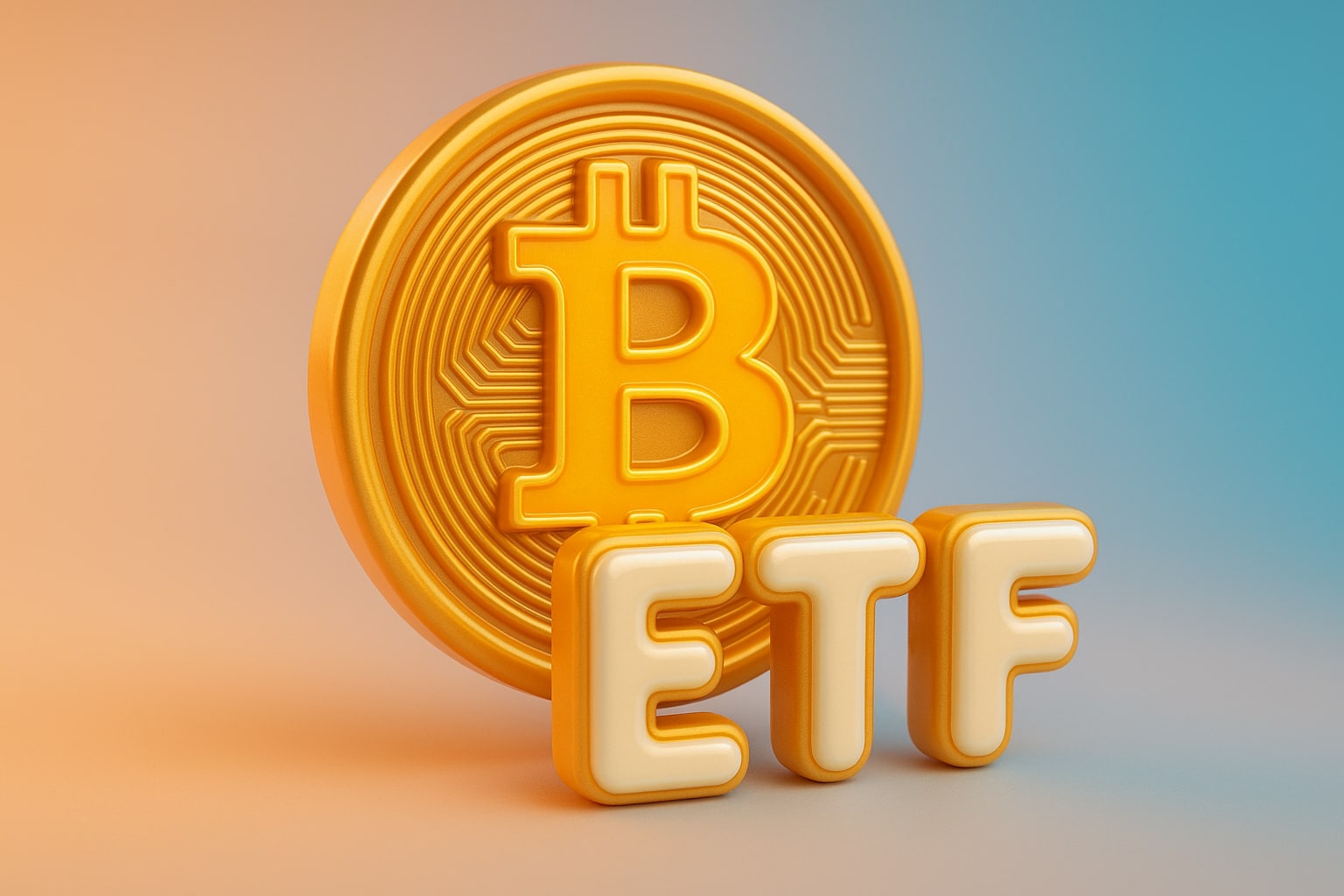
Bitcoin ETF Inflows Continue to Surge: A Look at $603.74 Million in Net Inflows
What factors are influencing the continued success of Bitcoin ETF inflows and how will they impact Bitcoin's price in 2025? | That's TradingNEWS
Bitcoin ETF Inflows Surge Again: A Strong Push in May 2025
Bitcoin ETFs see continued growth despite market challenges
Bitcoin exchange-traded funds (ETFs) have seen impressive inflows, with a surge of $603.74 million in the past week, marking the fifth consecutive week of positive net inflows. The key driving force behind this surge has been BlackRock's IBIT, which continues to dominate the space, bringing in a whopping $841.76 million. Despite the fluctuations in the market, especially with Bitcoin's volatility, the interest in institutional exposure to Bitcoin remains strong. The continued strength of Bitcoin ETFs signals investor confidence, even amid broader economic uncertainties.
What’s Driving the Momentum in Bitcoin ETFs?
The growth in Bitcoin ETF inflows is indicative of a larger trend toward institutional adoption of Bitcoin, as these investment vehicles offer a regulated and secure way for investors to gain exposure to the cryptocurrency. As of May 16, 2025, Bitcoin ETFs accumulated a total of $122.67 billion in net assets, demonstrating the continued appeal of these funds. Despite mixed signals in the broader market, with spot Bitcoin ETF inflows seeing a 90% drop from $3 billion to $228 million over four weeks, Bitcoin ETFs have maintained their growth trajectory.
BlackRock’s IBIT leads the pack, capturing more than half of the day’s inflows with $129.73 million on May 16, contributing significantly to its net asset value of $65.72 billion. Meanwhile, other players like Fidelity’s FBTC and Grayscale’s GBTC have seen outflows, signaling a shift in investor preferences, possibly due to changing market conditions or the performance of specific funds. However, even with outflows from some funds, the overall ETF sector continues to grow, underscoring Bitcoin's market resilience.
BTC-USD: Bitcoin Price Trends and ETF Correlation
Bitcoin's price has faced challenges in recent weeks, with fluctuations in the $104,000 range, showing both a drop and a rise. This price movement appears to correlate closely with the inflow and outflow of Bitcoin ETFs. Over the past month, Bitcoin’s price surged more than 20%, reaching a high of $106,000 before dipping to $102,000. Historically, strong ETF inflows have been a precursor to Bitcoin price rallies, and the recent dip in ETF activity may signal a short-term correction, with the market sentiment shifting toward caution.
Interestingly, Bitcoin's price action has at times diverged from ETF inflows, as seen in Q1 2025, when $3.8 billion in inflows occurred despite a 4.8% price decline. This anomaly suggests that while ETF inflows are a significant market indicator, other factors, including institutional whale activity, regulatory developments, and macroeconomic shifts, can also play crucial roles in Bitcoin’s price dynamics.
Ethereum ETFs Join the Rally: Performance and Outlook
While Bitcoin ETFs dominate the spotlight, Ethereum ETFs have also been gaining traction. The week ending May 16 saw a net inflow of $41.59 million into Ethereum ETFs, which was buoyed by a $63.47 million single-day inflow. BlackRock’s ETHA fund topped the charts with $66.04 million in inflows, reflecting strong institutional interest in Ethereum as well. Ethereum’s performance is closely tied to upgrades like the Pectra upgrade and leadership changes at the Ethereum Foundation, which are helping to fuel optimism in the market.
Ethereum’s recent price action has also been positive, with the currency gaining significant momentum. Despite some outflows from funds like Grayscale’s ETHE (-$26.22 million) and Fidelity’s FETH (-$20.16 million), the overall trend for Ethereum ETFs remains bullish, with growing institutional interest.
BTC-USD Price Action and Bitcoin ETF Demand: Key Takeaways
Bitcoin ETF inflows have been the mainstay of the recent rally, even as price volatility continues to test investor sentiment. The fact that Bitcoin ETFs have brought in over $41 billion since their launch in January 2024 is a testament to the growing institutional interest in cryptocurrencies. However, the recent slowdown in spot Bitcoin ETF inflows, with a drop from $3 billion to $228 million in just four weeks, suggests that market dynamics are shifting. Despite this, long-term trends indicate that the institutional appetite for Bitcoin exposure remains intact, driven by the growing adoption of blockchain technology and the rising importance of digital assets in global portfolios.
In terms of price predictions, Bitcoin’s price movement appears to be heavily influenced by ETF inflows and the broader market’s appetite for risk. Given the large volume of institutional interest, especially from funds like BlackRock’s IBIT, and the continued strong performance of Ethereum ETFs, there is a good chance that Bitcoin will see further upside, particularly if the broader macroeconomic environment becomes more conducive to risk-taking.
Ethereum vs Bitcoin: Comparing ETF Performance
Looking at the current landscape of Bitcoin and Ethereum ETFs, Bitcoin clearly leads in terms of overall net asset value and investor interest. However, Ethereum is rapidly catching up as more investors seek exposure to both leading cryptocurrencies. The performance of these ETFs, particularly BlackRock’s offerings, suggests that both Bitcoin and Ethereum are likely to continue to benefit from the growing interest in institutional crypto assets. Investors should closely monitor the price trends of both Bitcoin and Ethereum, as well as the evolving regulatory landscape, which could have a significant impact on future inflows.
How Do Bitcoin ETF Inflows Influence Long-Term Price Trends?
The correlation between Bitcoin ETF inflows and price movements has been evident in the past, with strong inflows often leading to price rallies. However, the recent slowdown in inflows suggests that investor sentiment may be shifting, and Bitcoin’s price may experience some consolidation in the short term. The key question remains whether the long-term trend for Bitcoin and Ethereum ETFs will continue to drive sustained growth or whether market conditions will cause a deeper correction. As always, investors should stay alert to both market data and broader economic trends, including potential regulatory changes, as these factors will play a significant role in the future trajectory of Bitcoin and Ethereum prices.
That's TradingNEWS
Read More
-
SCHD ETF Price at $27: Can SCHD’s 4% Yield and 9.15% Dividend Growth Beat High-Yield Covered Call ETFs?
15.12.2025 · TradingNEWS ArchiveStocks
-
XRP ETFs Close on $1B Inflows as XRPI at $10.92 and XRPR at $15.52 Hit 52-Week Lows
15.12.2025 · TradingNEWS ArchiveCrypto
-
Natural Gas Price Forecast: NG=F Holds the $4 Floor as Oversupply Clashes with 2026 LNG Demand
15.12.2025 · TradingNEWS ArchiveCommodities
-
USD/JPY Price Forecast - Dollar to Yen At 155: Yen Strength Builds As BoJ Hike And NFP Collide
15.12.2025 · TradingNEWS ArchiveForex

















